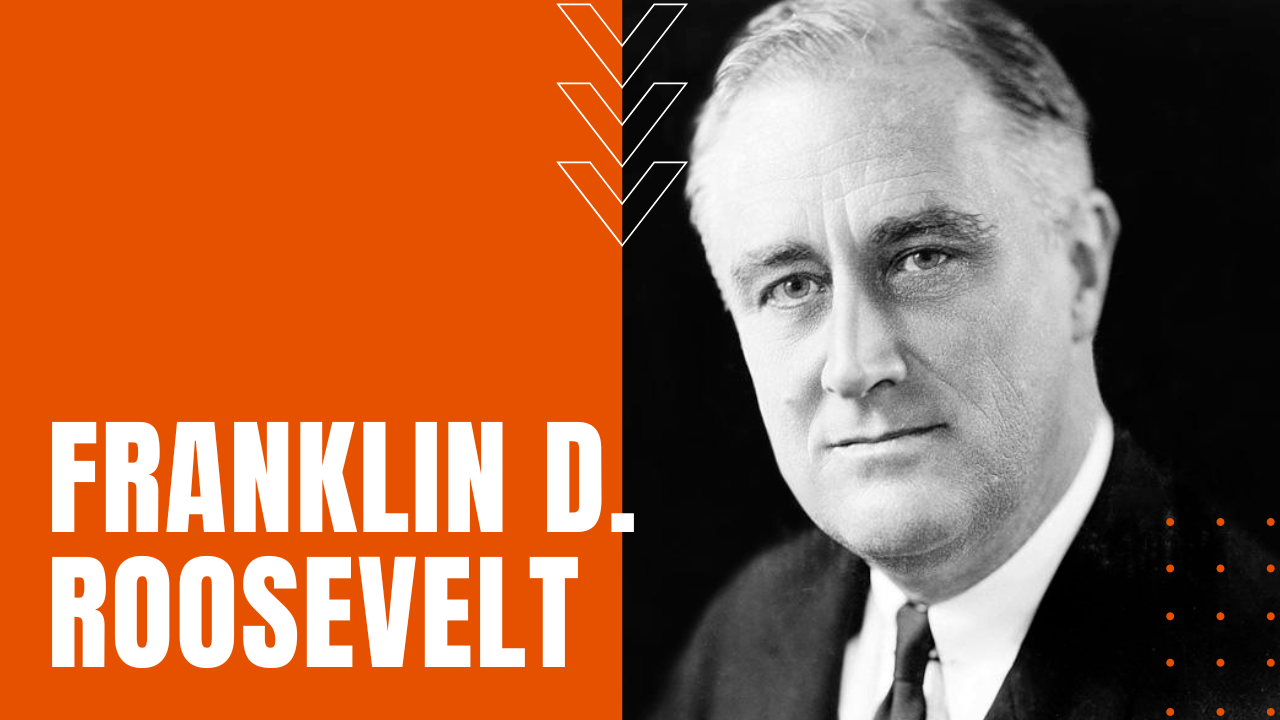Franklin D Roosevelt

Born into a wealthy family in 1882 Hyde Park New York, Franklin D. Roosevelt attended the prestigious Groton prep school before entering Harvard, marrying his fifth cousin Eleanor Roosevelt while attending Columbia Law School in 1905. Soon bored with the practice of corporate law, at age 28, FDR won two consecutive terms in the New York state senate, gaining national attention during the 1912 Democratic National Convention for his support of presidential candidate Woodrow Wilson.
A Coveted Post
His support landed him an appointment as Assistant Secretary of the Navy—the same job that propelled his distant cousin, Teddy Roosevelt, into the White House. Losing his bid for a U.S. Senate seat for New York, primarily due to the enemies he had made within the States’ well-entrenched political machine, FDR repaired his relationships with New York politicians before gaining additional exposure during the 1924 and 28 Democratic National Conventions.
Stricken By Polio
Succumbing to polio at the young age of 39, FDR ran and won the governorship of New York in 1928, setting in motion his progressive policies and social reforms which would follow him into the White House. A year later, after the Stock Market Crash of 1929 placed perceived blame on Republicans for the ensuing Great Depression, FDR’s personal charm and upbeat approach to dire circumstances helped him defeat Republican incumbent Herbert Hoover, commencing his morale-boosting fireside chats just eight days after taking office—a recurring event, which would rally American support for FDR’s New Deal and World War Two policies.
Persistent Economic Depression
Despite his 100-day First New Deal, intended to federally fund work opportunities for unemployed Americans, the Great Depression continued its downward spiral, prompting FDR to launch his Second New Deal in the Spring of 1935, pushing through the Social Security Act of that same year and the Works Progress Administration or WPA, which added additional federally funded jobs for the construction of post offices, bridges, schools, highways and park. After the Nazis invaded Poland in 1939—the first step in Hitler’s blitzkrieg sweep across Europe—a year later, FDR instituted measures to help Britain and France ward off Hitler’s aggression, including the Lend-Lease Act of 1941, which FDR called “the great arsenal of democracy,” offering American industrial might and war machines at extremely favorable terms for the Allies’ defense against the Nazis.
Leads America into War
Six months later, America would surrender its neutrality in World War Two, after Japan’s unprovoked attack on American naval assets at Pearl Harbor, before implementing policies to mobilize American industry for the production of war materiel, while playing a determining role in forming the Allied coalition and strategizing military operations. After winning an unprecedented fourth term in office, FDR passed away from a cerebral hemorrhage on April 12th, 1945, just days before the end of war in Europe, devastating American servicemen and women who had known no other president for the entirety of their lives, making the life and public service of Franklin D. Roosevelt, one of the most influential and transformative figures in American history.
